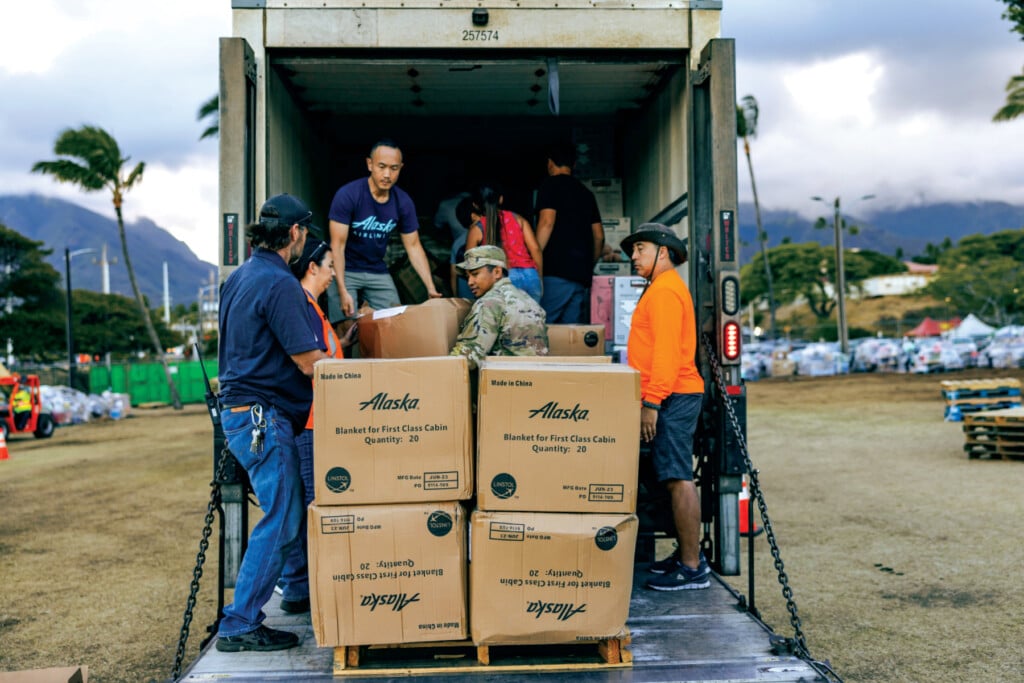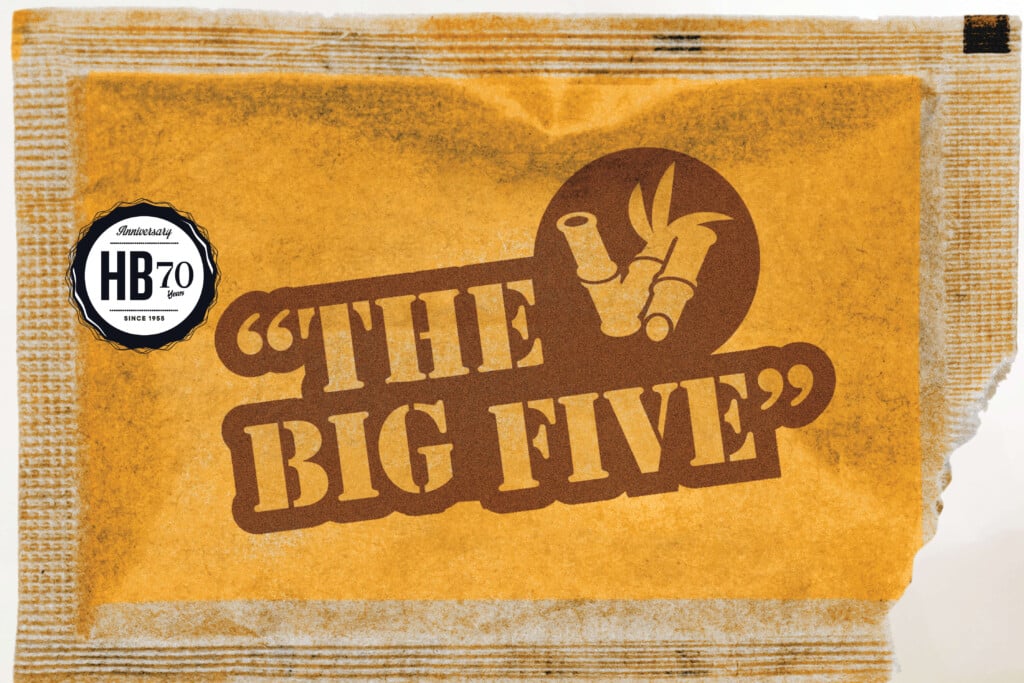Hawai‘i’s Most Charitable Companies 2025
Hawai‘i companies and nonprofits shattered giving records this year, donating over $349 million to state charities, nearly $50 million more than last year, while employees volunteered 90,000+ hours to support communities still recovering from the Maui wildfires and other critical needs.

In all, 106 companies and nonprofit organizations contributed more than $349 million, and employees volunteered more than 90,000 hours of their time to help those in need, according to Hawaii Business Magazine’s 2025 list of Hawaiʻi’s Most Charitable Companies. If that weren’t enough, employees donated $4.2 million of their own money on top of corporate gifts.
Technically, some of that total is double-counted, because part of the corporate gifts goes to philanthropic organizations such as the Hawaiʻi Community Foundation, which in turn distribute their donations to other philanthropic groups.
Still, the numbers reflect a robust generosity across the Islands to assist those in need while also filling gaps left by cuts in federal government funding that previously reached the state’s neediest.
“What makes Hawaiʻi unique compared to many other places is the way giving here is rooted in values – aloha, mālama and kuleana,” says Michelle Kaʻuhane, chief operating officer and executive VP of the Hawaiʻi Community Foundation, the biggest overall donor on the 2025 list.
“When our communities are in need, companies and their employees see themselves as part of the solution, and they respond in ways that reflect both compassion and commitment.”
The foundation reported cash and in-kind donations of $151.7 million, more than $50 million higher than the previous year.
In the two years since the devastating Maui blaze killed 102 people and destroyed most of the town of Lahaina, funds continued to pour in for the survivors and their families. Although the rebuilding effort has been slower than many had hoped, signs of progress are evident as the recovery effort, and the focus of philanthropic groups, shifts from emergency needs to interim support and longer-term sustainable economic development.
“The interim lifestyle of ‘temporary’ remains temporary two years later, so the challenge of long-term stability is still very real,” Kaʻuhane says.
“We went from very basic needs to more intricate needs. … Now we’re looking at longer-term needs. How do we convert to long-term housing strategies so that we have permanent units on Maui? There’s a lot of mental health issues. There’s a lot of financial crisis because people have been struggling to pay rent and continue paying a mortgage for a house that’s no longer standing.
“And so the challenges financially haven’t decreased. I would argue that they have increased,” Kaʻuhane says.
MATSON TOP CORPORATE GIVER
Matson, the state’s biggest shipping lifeline to the outside world and also its most profitable company for four years running, scored the top spot among corporate donors this past year, with cash and in-kind contributions of $7.6 million.
That’s down from the $8.7 million it contributed in 2023 but eclipses recent perennial pacesetter First Hawaiian Bank, which came in at $5.7 million; in 2023 the bank donated $7.4 million.
The 2,019 employees at the bank rounded up another $873,987 of their own money to contribute to charities, the highest level of employee giving at any company. (See accompanying story, p. 76)
Matt Cox, chairman and CEO of Matson, says the company takes its philanthropic mission seriously as “one of the guiding principles of our business.”
“We look for ways to make the biggest impact we can by focusing on support for established nonprofit organizations that are particularly effective in addressing significant community needs,” he says. “We also look for opportunities where our shipping services can be especially valuable to an organization or effort, like our multimillion-dollar commitments to food bank programs and Maui relief and recovery efforts.”
Reflecting its range of priorities, Matson’s top charity recipients this year included the Hawaiʻi Foodbank, Maui Wildfire Recovery, the Maui Food Bank, the American Heart Association and Big Brothers Big Sisters Hawaiʻi.
“When the pandemic struck, we increased our giving resources supporting social safety net programs, like Hawaiʻi Foodbank and other nonprofits that target food security,” says Cox. “Then, when tragedy struck Maui, we increased our giving again to support the emergency response and relief efforts, and later added recovery programs like temporary housing for displaced families.
“While we are still working with a number of these organizations to address continuing needs, we plan to return to our more traditional giving profile, supporting a wide range of social services, marine conservation, culture and arts, and education programs.”
First Hawaiian Bank, the number two corporate donor this year, focuses on three main areas of philanthropy: health and human services, education, and arts and culture.
“It changes over time” depending on the economy and community needs, says Bob Harrison, chairman, president and CEO at FHB. “At this point in time, we’re probably heavier in health and human services first, then education, and we still support the arts and culture but not to the degree we had in the past.”
MOST GENEROUS
When it comes to charitable giving, everyone likes to see large numbers. But it’s also easier for companies with vast revenues to give bigger amounts. Another way to rank charity is as a percentage of gross annual sales – let’s say “Most Generous.” In that category among for-profit companies, financial firm Wells Fargo Advisors takes the crown locally, with donations of $1.1 million, or 3.8% of total revenue.
Even Hawaiian Electric Industries, which took a huge loss last year to cover part of a $4 billion court-approved settlement of lawsuits in the Maui wildfires case, still donated $1.5 million to Aloha United Way, the Hawaiʻi Wildfire Management Organization and other groups. Its 2,587 employees also chipped in another $458,685 to various organizations out of their own pockets.
The University of Hawaiʻi Foundation was second in the nonprofit category of megadonors, with $63.7 million going to university programs, research and student costs. The nonprofit Kamehameha Schools reported $30.6 million in contributions to its top recipients: Saint Louis School, the Partners in Development Foundation, the Institute for Native Pacific Education and Culture, ʻAha Pūnana Leo, and the University of Hawaiʻi Foundation.
Reporting for the first time as a combined corporate entity, Hawaiian Airlines and Alaska Airlines said it made total contributions of $3.9 million from its Hawaiʻi-related operations.
UPCOMING CHALLENGES
As the leading conduit for fund flows through the state’s philanthropic organizations, Kaʻuhane of Hawaiʻi Community Foundation says its role has increased with each major disaster to befall the state.
“Over the last seven years, we’ve been through four disasters: the lava eruptions, the flooding in Kauaʻi, the Covid pandemic and the Maui fires,” says Kaʻuhane. “We feel we move from disaster to disaster.”
Corporate donations to the foundation come in many forms, not just cash.
“There were all kinds of creative ways that we could provide opportunities for businesses to partner with us,” Kaʻuhane says.
“Tommy Bahama gave us not cash but … all their advertising space at Maui airport – all their advertising space that would have promoted Tommy Bahama had our QR code promoting the Maui Strong Fund. So sometimes the corporate donations come in dollars and cents and sometimes they come in partnerships like that.”
But when making cash donations, companies should abide by one very specific plea, Kaʻuhane says: Don’t put restrictions on how the funds can be used.
“What I need folks to understand is that during a disaster we create a pool fund that allows every donor to help amplify the ability to meet community needs, and it is not restricted,” she says. “What that allows us to do is to move at the speed and the need of the community. We can go from basic needs to interim housing to long-term housing to mental health as we see those needs evolving.”
Besides the ongoing needs of victims of the Maui fire, the foundation continues to seek funds to address other issues, including housing shortages on Maui that preceded the fire, mental health programs across the state, and statewide early education programs.
Kaʻuhane says funding challenges in the year ahead became more complicated following huge cuts in federal grants and other programs under the Trump administration that in the past have benefited those most in need in Hawaiʻi.
“We have new information now that the year has started, and the new administration has made some decisions that we know will have long-term impact,” she says. “So, we’re really trying to wrap up fundraising so we can fill some of that gap.
“We’re going to have to be creative. We’re going to have some tough conversations, but we really are starting to think about how we fundraise to meet the needs of our community as that starts to evolve based on the federal dynamics.”
But Kaʻuhane remains optimistic. “Hawaiʻi’s giving, relative to the size of our population and economy, is remarkable,” she says. “The level of response shows that when challenges arise, Hawaiʻi’s business community and workforce stand shoulder to shoulder with residents to ensure that our Islands recover and thrive. This past year has reinforced what we already know: Generosity is one of Hawaiʻi’s greatest strengths.”
 The complete Most Charitable Companies list appears exclusively in the November print issue of Hawaii Business Magazine.
The complete Most Charitable Companies list appears exclusively in the November print issue of Hawaii Business Magazine.





